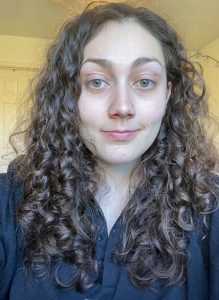February 22, 2024

In a discovery that could revolutionize precision heart health care, Mizzou Engineering researchers have developed a way to measure cardiovascular stiffness—or the rigidity of arteries in your heart—based on data already being collected by traditional echocardiograms.

“I consider this the most important work I’ve done in my career,” Professor Noah Manring said. “We have an incredible opportunity to collaborate with cardiologists and physicians to implement this into monitoring that’s already being done to provide better, more precise information to help determine treatment options.”
Aortic stiffness is linked to cardiovascular health, however, right now there’s no clinical way for doctors to measure it. That means patients are given standard treatments for conditions when those procedures or medications may not be the best option.
In other words, patients diagnosed with high blood pressure are all prescribed treatments involving blood thinners, water pills and medicine to open blood vessels. Those who have high blood pressure but higher than normal aortic stiffness, however, may need a different treatment altogether.
“And in some cases, those wrong treatments may alleviate symptoms, but can actually cause more complications later,” said Maggie Oliver, a Ph.D. student in mechanical engineering working with Manring on the project.
One measure currently used to assess aortic stiffness is known as the pulse wave velocity test, or PWV, however it’s only being used in research settings.
PWV is considered the gold standard, Oliver said, but it only measures how quickly the pressure waves generated by heartbeat travel along the arteries. While interest in PWV has grown, it’s not been implemented as the method has not been standardized. Therefore, even if hospitals were to adopt it, at this time PWV treatment would not be covered by health insurance.
“Our method is actually better, not only because you can extract the aortic stiffness measurement from existing data, but also because it provides more precise data,” Manring said. “The methods developed in this research use standard clinical examinations that are routinely paid for by insurance, so it would extend the benefits of total cardiovascular assessment to a much wider patient group.”

The team published preliminary data on the new method in the American Society of Mechanical Engineers’ Journal of Engineering and Science in Medical Diagnostics and Therapy.
The paper provides data from echocardiograms of a small sample of patients at MU Hospital collected by Oliver along with Dr. Senthil Kumar, a cardiologist at MU and also a co-author on the paper.
To measure cardiovascular stiffness, the team used a well-known relationship that expresses mean arterial pressure as the product of cardiac output and peripheral resistance.
The new approach introduces a formula for stiffness involving five parameters routinely measured during an echocardiogram, including the amount of blood pumped in one contraction, the time it takes for the heart to pump blood, the heart rate, and the pressure in arteries when the heart is both pumping and at rest.
The researchers, through the MU Technology Transfer Office, have filed a preliminary patent for the work that includes future goals to incorporate the measurement into mobile or wearable devices. The measurement could also become part of routine blood pressure monitoring.
“The next steps will focus on determining the reproducibility of our method and its correlation with predicting cardiovascular risk,” Manring said. “If this is successful, it would be used to automate the assessment of total cardiovascular stiffness during routine echocardiograms, providing a holistic assessment of other cardiovascular health markers that are currently difficult to obtain in the clinic, and revolutionizing the way cardiovascular health is monitored on a routine basis. Our ultimate goal is early detection of cardiovascular stiffness to allow more time for lifestyle changes to improve overall health and longevity of patients.”
Gregory F. Petroski from the Department of Statistics in the MU College of Arts & Science, also collaborated on the work and paper.